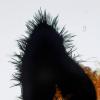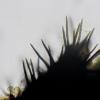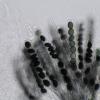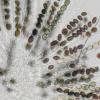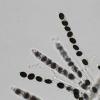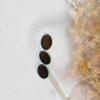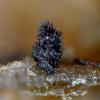
15-12-2025 21:11
 Hardware Tony
Hardware Tony
Small clavate hairs, negative croziers and IKI bb

15-12-2025 07:09
 Danny Newman
Danny Newman
indet. Rutstroemiaceae sp. on unk. fallen leavesMc

15-12-2025 15:54
 Johan Boonefaes
Johan Boonefaes
Unknown anamorph found on the ground in coastal sa

15-12-2025 15:48
 Danny Newman
Danny Newman
Melanospora cf. lagenaria on old, rotting, fallen

15-12-2025 07:05
 Danny Newman
Danny Newman
Pseudosclerococcum golindoi (det: Zotto)near Cosb

15-12-2025 11:49
 Danny Newman
Danny Newman
ITS sequences from the following two collections B

15-12-2025 12:34
 Danny Newman
Danny Newman
indet. Rhytismataceae on oak leafnear Purchase Roa

09-12-2025 12:06
 Andgelo Mombert
Andgelo Mombert
Bonjour,Je recherche l'article concernant Hypobryo
Coniochaeta ligniaria?
Chris Johnson,
05-03-2015 13:07
Found on pony dung.
Perithecia 600µm tall x 400µm wide covered in setae, 60-75µm long, thich-walled with acute apices.
Asci 8-spored, uniseriate, 165-178 x 13µm
Spores with vertical germ slit, 11.4 x 9.1 x 6.7 (average) mostly measured within the asci. Spores have a gelatinous sheath.
My main concern is the spore-size. Althought mine sit comfotable in the lower size-range, Mahoey & LaFavre and Checa give a larger range. Checa also notes that the spore-size is quite variable.
Comments welcome. Thank you, Chris
Michel Delpont,
05-03-2015 14:50

Re : Coniochaeta ligniaria?
Hi Chriss.
I think it is indeed C.vagans. Many authors divide C.ligniaria (rather on wood) of C.vagans on dung. The latter usually have more rounded spores in front view. Have you observed the germination slit around the spore? Spore size is actually quite variable.
Michel.
I think it is indeed C.vagans. Many authors divide C.ligniaria (rather on wood) of C.vagans on dung. The latter usually have more rounded spores in front view. Have you observed the germination slit around the spore? Spore size is actually quite variable.
Michel.
Chris Johnson,
05-03-2015 16:24
Re : Coniochaeta ligniaria?
Hi Michel
Thank you for the confirmation. Germ slits were observed best with the microscope, especially on slightly immature spores.
Mike Richardson worked on dung fungi for many years, mainly in Scotland and the islands and recorded Coniochaeta ligniaria numerous times on various types of dung although, as far as I can ascertain, not on horse.
Bita Asgari, et al, have Coniochaeta vagans with a smaller spore-range more in keeping with mine but, as you say, they can be quite variable. My main concern is that Coniochaeta vagans has only one record on the national database and that may be dubious as there is no data attached to it.
Regards, Chris
Thank you for the confirmation. Germ slits were observed best with the microscope, especially on slightly immature spores.
Mike Richardson worked on dung fungi for many years, mainly in Scotland and the islands and recorded Coniochaeta ligniaria numerous times on various types of dung although, as far as I can ascertain, not on horse.
Bita Asgari, et al, have Coniochaeta vagans with a smaller spore-range more in keeping with mine but, as you say, they can be quite variable. My main concern is that Coniochaeta vagans has only one record on the national database and that may be dubious as there is no data attached to it.
Regards, Chris
